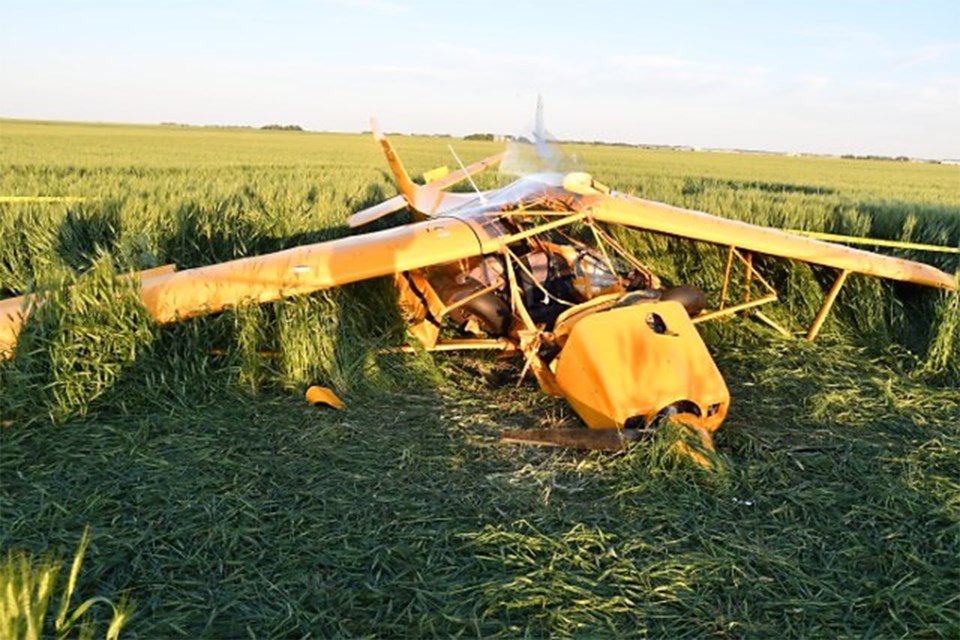MOUNTAIN VIEW COUNTY - The pilot of an aircraft that crashed outside Didsbury, killing both himself and a male passenger, conducted two intentional stall maneuvers just prior to the fatal impact, according to a Transportation Safety Board of Canada (TSBC) investigation report released last week.
The 69-year-old male pilot from the Didsbury area and a 65-year-old male passenger from New Zealand were occupants of a Zlin Savage ultralight aircraft that crashed in a farmer’s field near Twp. Rd. 312 and Rge. Rd. 285 on the afternoon of July 13, 2022.
They both died at the scene. They were found several hours after the crash by another pilot taking part in a search for the missing men.
In its report into the crash, the TSBC said the aircraft entered into an intentional power-on stall at about 1,100 feet altitude.
“A successful recovery was made followed by a transition into another power-on stall at 900 feet with a steeper nose-up attitude,” the report states. “At the point of the (second) stall when the nose dropped, the left wing dropped as well, and the aircraft entered a left spin.
“Power was reduced to idle, increased momentarily, and then reduced to idle again. During the spin the pilot held the flight control stick aft and to the right. On two occasions the controls were moved to a neutral position for less than one second each time before returning to aft and right control position.”
The aircraft’s average descent rate was approximately 3,300 feet per minute and the rate of rotation during the spin was approximately 90 degrees per second.
“The aircraft’s attitude near the end of the spinning maneuver was relatively flat compared to the typical nose-down attitude for light aircraft in a spin.”
The plane impacted the ground in the field south of the airstrip, with both men receiving fatal injuries.
“The aircraft struck the ground with little-to-no forward speed in a shallow, nose-down attitude with a slight right-wing-low bank angle.”
Data from the aircraft’s portable GPS system and smartphone video from inside the plane taken during the flight was used as part of TSBC investigation.
Weather was not a factor in the crash, investigators said.
Tristram Cottier is a pilot member of the Olds-Didsbury Flying Association. He said an intentional power-on stall is a routine procedure pilots practise from time to time.
“Basically a power-on stall exercise is a procedure to practise what it might feel like to stall a plane after takeoff, and a power-off staff is a procedure to practise how to recover from a stall during a landing approach,” Cottier told the Albertan.
TSBC investigators said the intentional power-on stall recovery should be completed at an operational safe altitude that allows recovery at or above 2,000 feet.
The pilot operating handbook for the Zlin Savage ultralight states that intentional spins are prohibited.
The report concluded: “Pilots are reminded that stalls should be conducted at an altitude form which safe recovery can be made. When conducting stalls, there is always the possibility that aircraft will enter into an inadvertent spin, so pilots should be familiar with the spin recovery techniques for their aircraft model. In addition, pilots should not conduct stalls when there is a passenger on board.”
It is not the function of the TSBC to assign fault or determine civil or criminal liability.



